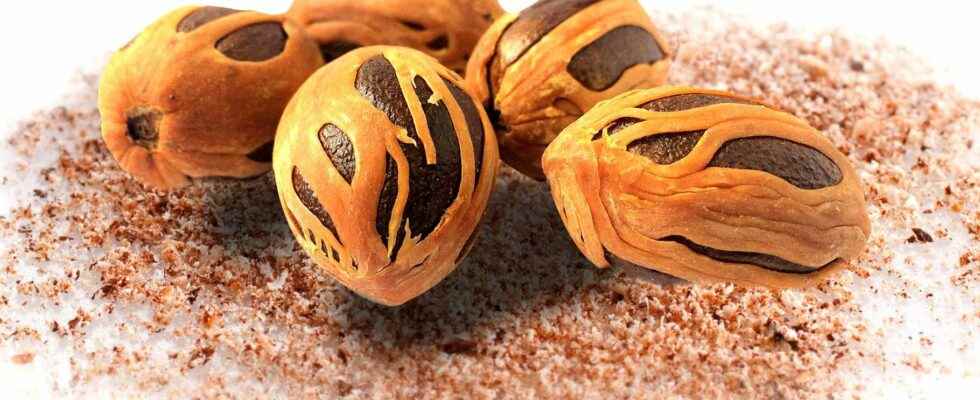When you think of hallucinogenic substances, you probably don’t expect to find one on your spice rack. The narcotic effects of nutmeg are known from the XVIand and XVIIand centuries. But what chemical compounds are at the origin?
You will also be interested
Several substances are involved in the effect hallucinogenic of the nutmegthe main one being myristicin, which accounts for about 1.3% of the nuts raw. Research suggests that the effects of nutmeg may come from processing in the liver myristicin to MMDA, a “psychedelic” amphetamine. However, this transformation has been observed in the liver of rats, but not in humans.
It is interesting to note that when a large quantity of pure myristicin (twice the quantity contained in 20 grams of nutmeg) is administered to a group of volunteers, if six out of ten feel the effects well, these are however lower than expected in comparison with nutmeg. This suggests that other substances in the nut have an important role in inducing the “nutmeg effect”; it could be elemicin and safrole.
An experience to avoid
Before you go for a tablespoon of nutmeg to try the experiment, you must first consider the consequences that this can entail. One to two milligrams of nutmeg per pound of body weight can have serious effects on the central nervous system (Myristicin blocks nerve impulses responsible for involuntary muscle movements in certain body systems, such as the gastrointestinal tract and lungs) and it is said that one tablespoon is enough to trigger other reactions, such as nausea, vomiting, flushing, high heart rate,euphoriafrom hallucinations and a feeling of dry mouth; Come to think of it, nothing very encouraging here.
And that’s not all: some of these symptoms can persist for several days, and problems with sight, balance and concentration have even been observed for more than a week. All in all, nutmeg is best confined to the kitchen spice rack.
Discover our partner’s book Polytechnic and university press in French-speaking Switzerland : “Why Asparagus is a spring vegetable, which appears on market stalls in April and until June.
Nutritional qualities of asparagus
Excellent diuretic, asparagus provides only 25 kilocalories per 100 grams while it provides a wide range…” data-image=”https://fr.cdn.v5.futura-sciences.com/buildsv6/images/midioriginal /2/e/4/2e485c1dba_50035821_asparagus-wiki.jpg” data-url=”/planet/definitions/botany-asparagus-7581/” data-more=”Read more” title=”Asparagus” href=”https:/ /www.futura-sciences.com/planete/definitions/botanique-asperge-7581/”>Does asparagus give pee an odor? » by Andy Brunning.
Interested in what you just read?
